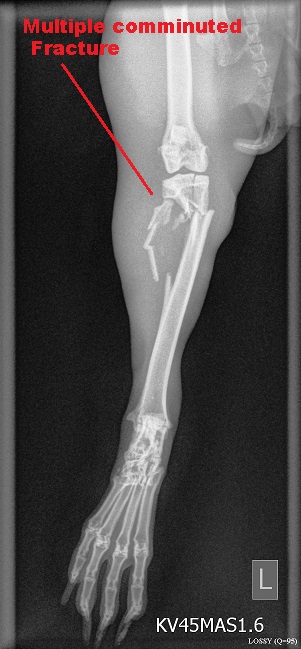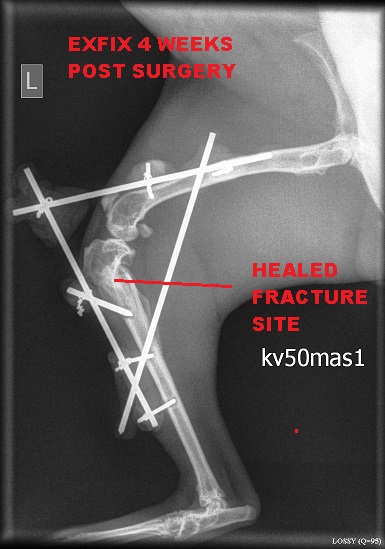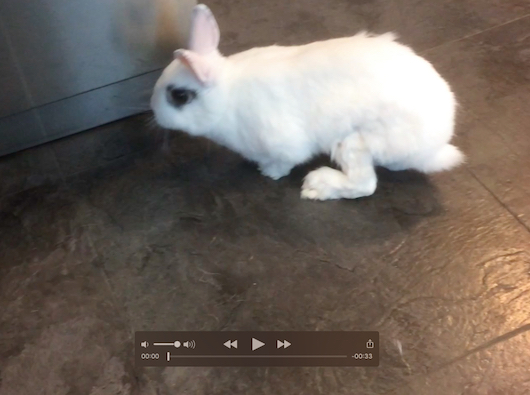Let us introduce you to Romeo an adorable dwarf hotot rabbit weighing in at just 1 kilogram. Can you spot the obvious problem with this picture after poor Romeo had a bit of an accident?
Romeo was brought to Oak Barn Vets holding up his left back leg and not keen to move around. Betty examined Romeo carefully and found that he had considerable bruising below his left knee which was not sitting at a normal angle. Romeo was quickly admitted with a suspected fracture and given pain relief before being sedated for some x-rays of his back legs.

The x-rays showed that Romeo had indeed broken his hindleg just below the knee joint fracturing both bones of the lower leg, the tibia and the thin fibula alongside. Unfortunately has also had a fissure running up into the knee joint making a surgical repair all the more tricky. It was a mystery how he had managed this but we can only assume that he kicked against something hard whilst tearing around, having fun. Due to the size and fragility of rabbit’s bones and the heavy muscling of their legs, fracture repairs in rabbits have a high rate of complications but Romeo’s owner was keen to see what could be done to get him back up onto 4 legs. After contacting a number of specialist orthopaedic and exotics practices we arranged referral of Romeo to see a Vet called Dan at Great Western Exotics in Swindon.
We sent all the x-rays to Dan for his opinion and quickly arranged an appointment for him to meet Romeo. After a dash down the motorway to Swindon Romeo was anaesthetised for placement of an external fixator frame to support the fracture and immobilise his hindlimb and knee joint, hopefully allowing the healing process to begin at the site of his fracture.
An external fixator (exfix) involves the fixing of a number of pins through the skin into the bone above and below the fracture site. These are then connected by rods and clamps to make the frame rigid. External fixators allow stabilisation of a fracture without invasive surgery which, given the small size of Romeo’s leg and the presence of fissures, reduced the risk of surgical complications.

Romeo had an xray of his fracture repair straight after surgery to confirm that the pins were all sited correctly and he was soon discharged for several weeks rest and finger crossing. After 4 weeks Romeo was due his repeat x-rays to assess progress of his fracture healing at the Barn. During his recovery he had been weight bearing on the fractured leg, using the exfix frame to take the load whilst the fracture could be allowed to heal.

Repeat x-rays showed that the fracture was healing well but as expected the frame was starting to work loose. This is a common finding with exfix repairs. At this stage, after discussion with Dan, we elected to remove the fixator frame and pins from Romeo’s leg and place a splinted bandage for the next week to protect the healing fracture site.

2 weeks later Romeo was weight bearing well through his leg and hopping about normally, the fracture repair seems to be progressing nicely and after a few more weeks of restricted activity he should be back to full mobility. With no further treatments required. Dan has been kept updated on Romeo’s progress and has been delighted to hear that he is doing well.
Have a look at his recovery video below with a happy hippity hoppity end to our story!




